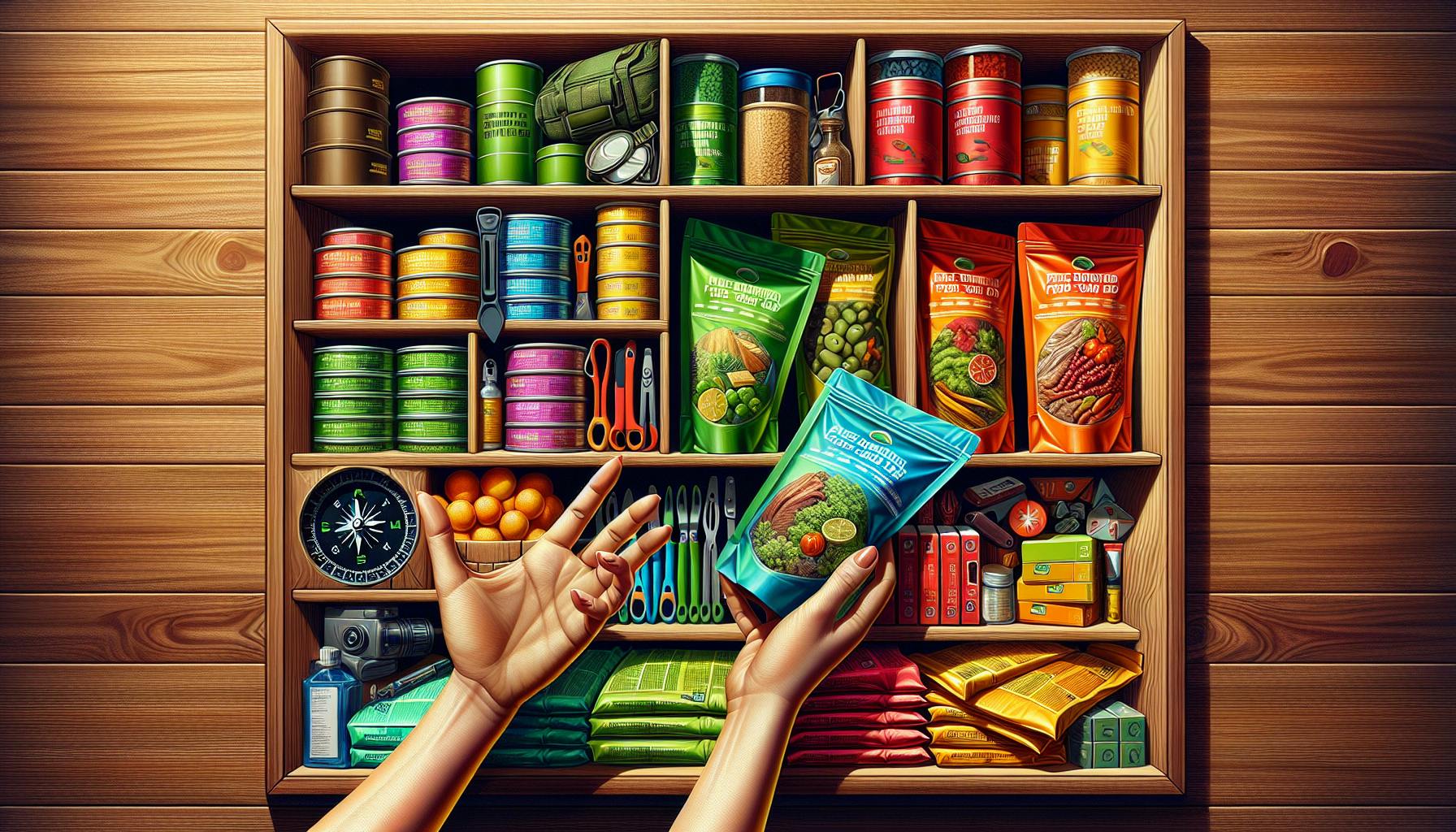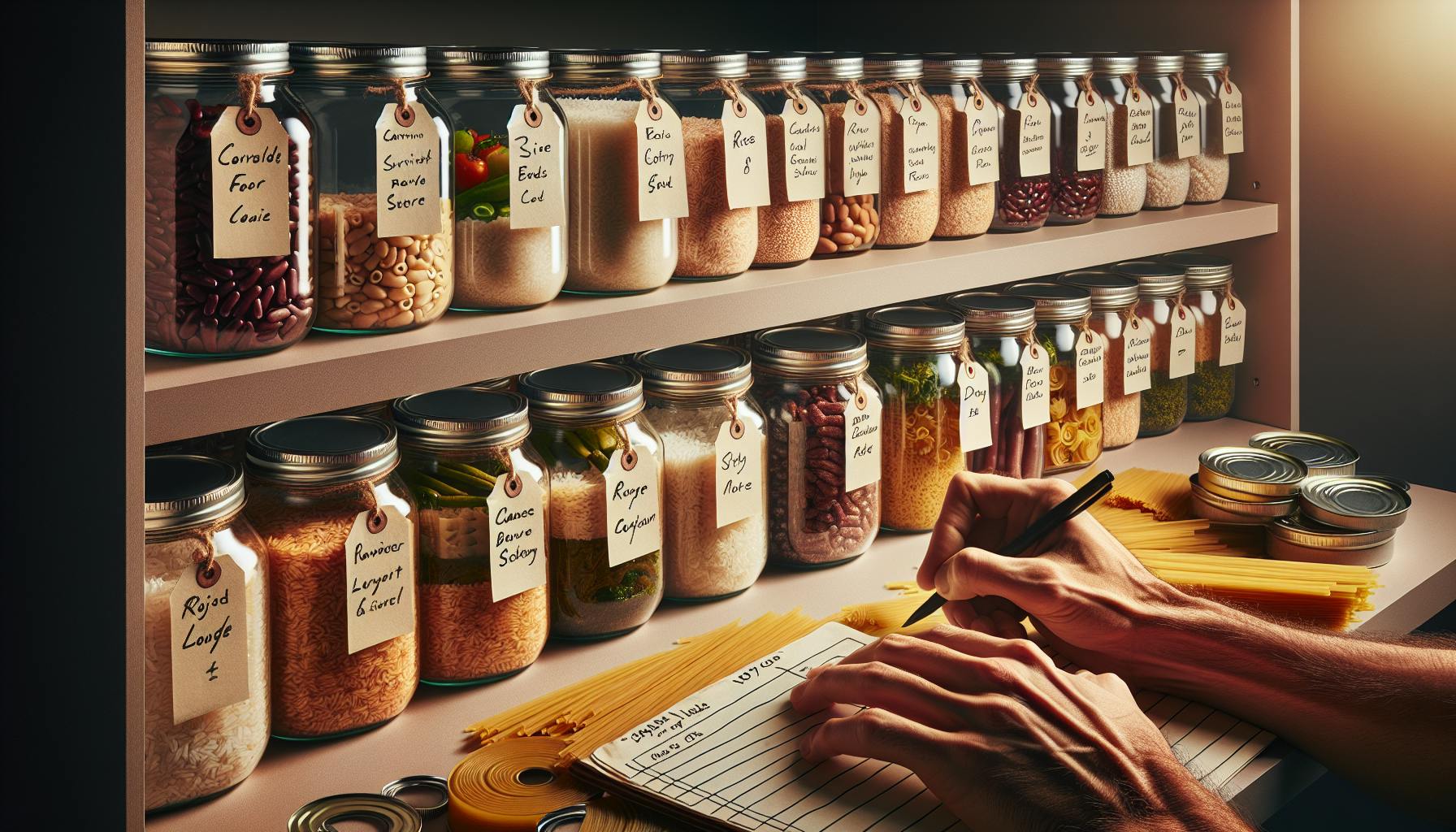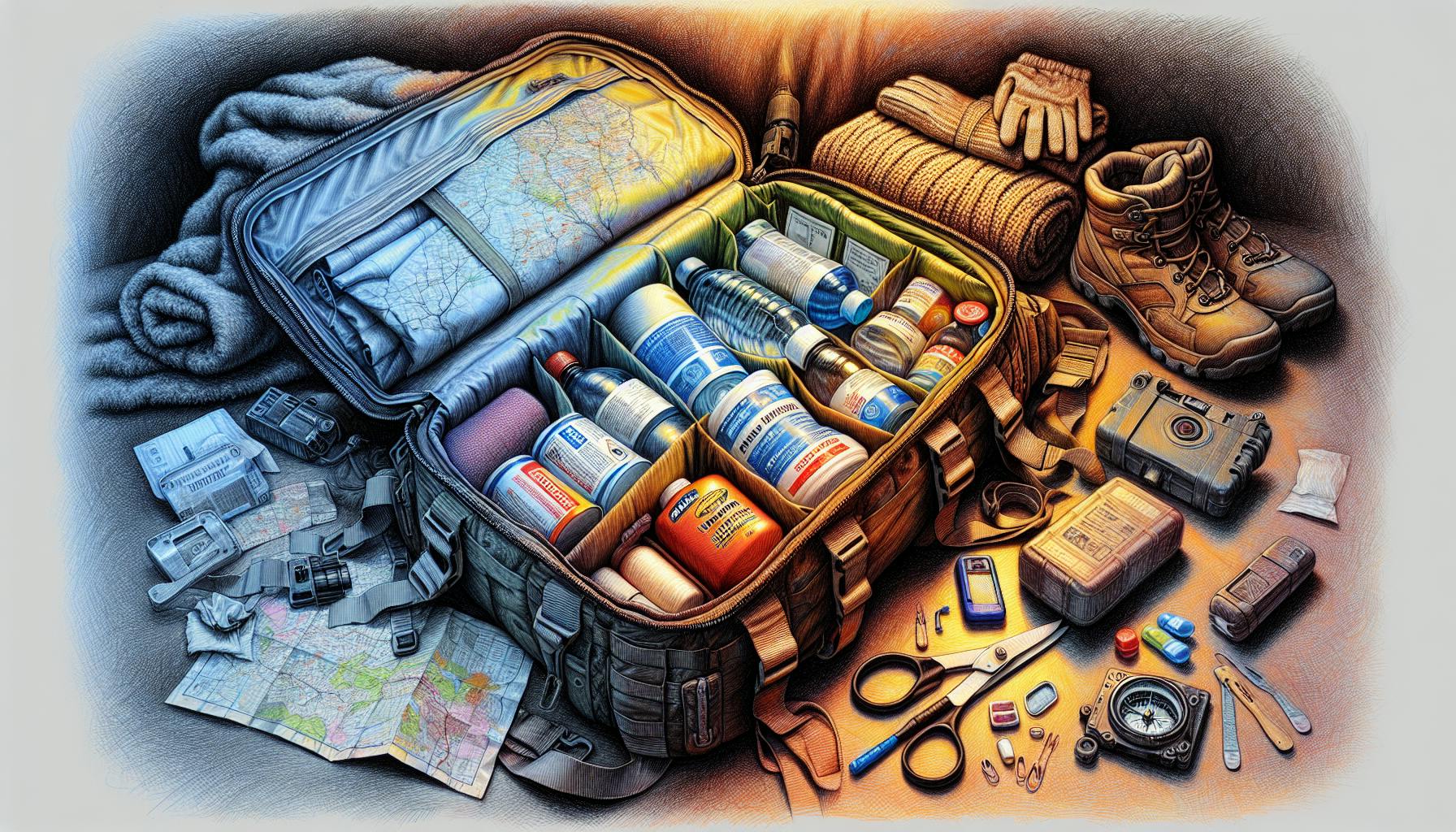With political tensions, climate change, viral outbreaks and economic uncertainty threatening global stability, doomsday prepping has become a practical means of preparation for over 5 million Americans. Building comprehensive doomsday preppers kit lists provides the essential supplies for surviving potential catastrophes and disruptions. However, assembling a robust and sustainable doomsday kit requires careful planning to cover all critical bases. This in-depth guide explores the key categories of gear, prudent principles, and essential factors for equipping your doomsday kit to maximize self-reliance and long-term survival.
Introduction to Doomsday Prepping Gear Essentials
Doomsday preppers anticipate widespread disasters from events like nuclear war, extreme weather, pandemics, or financial crashes. While some criticize preppers as paranoid, their dedication to preparedness arises from logical risk analysis. Since no one can reliably predict the future, building supplies and skills to handle potential catastrophes simply makes sense. Wise preppers focus not just on stockpiling, but also acquiring knowledge to live safely in unstable conditions.
Every comprehensive doomsday prepper’s kit should contain gear for procuring water, food, medical care, shelter, power, self-defense and other fundamental needs. With potential supply chain breakdowns, preppers stockpile reserves, learn sustainable living practices and adopt flexible survival mindsets. Sensible preparedness balances costs, versatility, redundancy and space requirements for key items.
This guide provides an in-depth look at gear, skills, and planning considerations for assembling your doomsday preppers kit list. We’ll cover essentials like food, water, first aid, tools, and bug out bags. We’ll also discuss critical factors like tailoring for regional risks, redundancy, versatility, operational security, sustainability, survival abilities, and hands-on experience. Let’s start by reviewing the core categories of supplies.
Stocking Up on Food and Water
Food and water will be urgent priorities in any emergency, so stockpile at least 2-4 weeks of supplies, focusing on nutritious, non-perishable foods with extended shelf lives.
-
Canned goods like meat, beans, fruit, and vegetables can last 2+ years if unopened. Choose easy open pop-top cans.
-
Dried foods like rice, pasta, dried fruit, and jerky also store well long-term. They’re lightweight for bug out bags.
-
Comfort foods like coffee, candy, sweetened cereals boost morale.
-
Calorie-dense proteins and fats from peanut butter, oils, nuts and trail mixes provide energy.
-
Water filters like the Sawyer Mini and Lifestraw remove bacteria and viruses.
-
BPA-free bottled water in jugs with sealed lids prevents leaks.
-
Use “first in, first out” stock rotation and monitor expiration dates.
-
Mylar bags and oxygen absorbers prolong food freshness.
First Aid Prep - Handling Injuries and Illness
Medical issues will likely arise, so stock trauma kits, medications, and supplies for off-grid care.
-
Trauma bags equipped with tourniquets, sutures, splints, IVs and manuals
-
Bandages, gauze, medical tape, antiseptic wipes to treat wounds
-
Medications like ibuprofen, antihistamines, anti-diarrheals, antibiotics
-
Nitrile gloves, N95 masks, gowns to prevent infection spread
-
Instruments like tweezers, scalpels and trauma shears for procedures
-
Dental supplies, vitamins to maintain long-term health
-
EpiPens, AEDs, oxygen for life-threatening emergencies
-
CPR masks and guides to refresh lifesaving skills.
Gear for Defense, Hunting, and Survival
Reliable tools aid in securing basic needs like food, water, and shelter while also providing personal protection.
-
Quality knives and multipurpose tools for construction, mechanical repairs, and hunting
-
Hatchets and axes for harvesting firewood and timber
-
Fishing kits with collapsible poles, tackle, and line for procuring food
-
Two-way radios, solar chargers for vital communication
-
Firearms and ammunition, where legally allowed, for security
-
Pepper spray offers non-lethal protection in restricted areas
-
Paracord, carabiners, duct tape, tarps assist survival tasks and shelter building
-
Work gloves, safety glasses for handling debris, game processing, etc.
Clothing and Shelter Essentials
Clothing, tents and sleeping gear shield from the elements, enabling survival in harsh conditions.
-
Moisture-wicking base layers from brands like Under Armour regulate temperature
-
Waterproof/windproof outer layers like GORE-TEX jackets, bibs, boots
-
Wool socks, polyester long underwear retain warmth when wet
-
Wide-brim hats, sunglasses protect from sun exposure
-
4-season tents like the ALPS Mountaineering Lynx provide reliable shelter
-
Compressed and rated sleeping bags retain warmth in frigid overnights
-
Mylar blankets prevent hypothermia in emergencies
-
Collapsible water containers to harvest rainwater if other sources are scarce
Bug Out Bags - Compact Survival Kits
Bug out bags provide 3+ days of essentials for evacuation scenarios. Pack intelligently to maximize limited space.
-
Backpacks like the Thule Versant with supportive suspension systems for trekking
-
Nutrient-dense foods like Peak Refuel meals, Epic bars, and jerky
-
Ultralight water filters such as the Sawyer Squeeze for mobile purification
-
Maps, compass, emergency GPS like the Garmin inReach for navigation
-
Weather-appropriate insulating clothes and raingear to layer based on conditions
-
Pepper spray, bear spray or baton for non-lethal defense
-
Crank or solar AM/FM radios for news without batteries
-
LED flashlights, lithium batteries provide low-drain illumination
-
Copies of essential documents like ID cards, permits, passwords
Cultivating Survival Skills and Mindsets
Being well-supplied is crucial, but dedicated preppers also foster practical survival capabilities and flexible mindsets to overcome physical and mental challenges.
Adopting a Survival Mindset
Develop knowledge, vigilance and mental toughness to persevere through stressful disaster scenarios.
-
Take specialized training courses in skills like hunting, foraging, emergency medicine, and self-defense
-
Practice primitive abilities like fire starting, camouflage, natural shelter construction
-
Maintain situational awareness by surveilling surroundings and mentally mapping exit strategies
-
Cultivate adaptability and mental resilience with mock emergency drills
-
Stay fit and sharp with exercise, memory games, and nature skills
Rotating Stock and Assessing Needs
Keep supplies organized, rotated and tailored to evolving vulnerabilities.
-
Catalog inventories noting quantities, shelf lives, and storage locations
-
First in, first out stock rotation prevents waste from expired goods
-
Customize food choices to meet health needs like diabetes or food allergies
-
Adjust preparedness as risks and group composition changes
-
Use shelves, bins and labels to efficiently organize supplies
Practicing Operational Security
Keep a low profile and avoid revealing preparedness activities.
-
Keep discreet about prepping online and in-person
-
Make bulk purchases cautiously with cash to avoid records
-
Store supplies across multiple secure locations so all eggs aren’t in one basket
-
Hide and lock away critical reserves
-
Use non-descript bags and packs when transporting gear
Developing Self-Sufficient Living Skills
Live sustainably using renewable resources like solar, hydro, and homesteading.
-
Cultivate renewable food from gardening, aquaculture, and livestock
-
Collect rainwater in barrels and cisterns for self-sufficiency
-
Harness solar energy from panels and generators to charge devices
-
Learn preservation methods like smoking, curing, canning, and drying
-
Master vital skills like welding, machining, and sewing for equipment upkeep and manufacturing
Tracking World Events and Potential Threats
Stay informed on global events to make realistic preparations and response plans.
-
Monitor political conflicts, disease outbreaks that could spur regional instability
-
Research likely local disasters like wildfires, earthquakes, tornadoes, etc.
-
Take first aid and emergency readiness courses to sharpen crisis response skills
-
Drill emergency scenarios like sheltering-in-place, evacuating, administering medical care
-
Network with local prepper groups to exchange wisdom and team up
Key Factors in Building Your Custom Doomsday Kit
Calibrate your doomsday prepping supplies based on vulnerabilities, storage space, budget, and hands-on experience.
Prioritizing Regional and Personal Risks
Tailor preparations by researching threats unique to your locale and situation.
-
Evaluate local disaster history like wildfires, storms, droughts, civil unrest
-
Consider personal medical needs and their off-grid management
-
Check proximity to nuclear sites and typical wind currents to project radiation exposure
-
Anticipate supply chain instability by sustainably producing food and medicine reserves
Balancing Quality, Costs and Storage Realities
Obtain quality gear without overspending or hoarding unusable surplus.
-
Research meticulously to avoid overpaying for unproven products
-
Take stock of current space for rational storage plans - invest in organization systems
-
Prioritize versatile basics like water, food, first aid, tools, and communication
-
Maintain only what you’ll use through diligent stock rotation
-
Choose compact multipurpose items like vacuum-sealed clothes or micro fishing kits
Incorporating Redundancy for Critical Supplies
Backup vital items in case primary sources fail.
-
Cache duplicate food, water, medical resources in separate locations
-
Have backup options for fire, light, and communication like matches, flashlights, HAM radios
-
Keep extra copies of essential documents like IDs, medical records, passwords
-
Stock spare parts, lenses, batteries for repairing key equipment
-
Prioritize redundancy for inexpensive but vital items first
Seeking Versatile, Multi-Use Gear
Choose flexible solutions serving many survival needs.
-
Select clothing suitable for varied conditions
-
Carry multifunction tools like Swiss Army Knives
-
Standardize gear to shared power sources like AA batteries
-
Pick foods like powdered milk with uses for drinking and cooking
-
Canning and bottling allows for immediate or long-term consumption
Hands-On Practice and Trial Runs
Repeated practice builds skills and reveals preparation gaps.
-
Conduct supply inventories and practice drills to identify vulnerabilities
-
Test equipment and rotate stock to keep materials operational
-
Hone survival skills through repetition like fire starting, foraging, and medical aid
-
Perform timed evacuation drills to improve readiness
-
Take classes like radio operation or rainwater harvesting for new competencies
Conclusion on Essential Doomsday Prepping
Having reliable reserves of water, food, medical gear, shelter, and self-defense equipment provides a firm foundation to survive disruptions. Yet prepping also requires cultivating survival mindsets, skills, and self-sufficient living practices. Continuously analyze risks then test and refine your capabilities through hands-on drills. Avoid accumulating supplies simply for the sake of excess. The most resilient preppers tailor streamlined kits to likely regional emergencies while honing practical hands-on abilities. With thoughtful doomsday preparations, you can be ready to safely navigate potential catastrophes.


